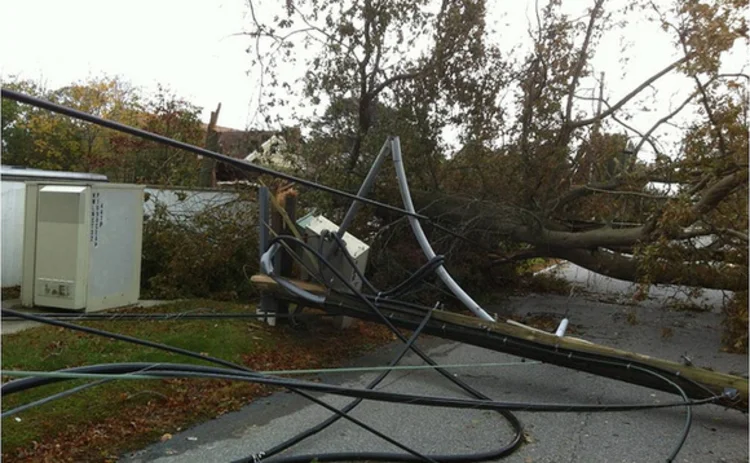
Post Blog: Business interrupted

What can previous catastrophes tell us about the business interruption landscape following superstorm Sandy? Amy Lacey explains.
Superstorm Sandy wreaked devastation across the Caribbean and US east coast, and is expected to generate around one million residential and commercial insurance claims with insured losses in the region of $20bn (£12.4bn).
The storm made landfall as a post-tropical cyclone in October, affecting 20 US states, with severe storm-surge, flooding, fires and downed power lines in New York and New Jersey.
The scale of destruction and disruption to business infrastructure has put Sandy on course to become one of the costliest wind events in history, forcing the market once again to reassess loss exposures and tackle complex issues arising from wide area damage situations.
Events such as Sandy require detailed analysis to determine whether cover has been triggered.
Policyholders with exclusions for flood may be covered under the Federal Emergency Management Agency insurance programme, although only a small percentage of at-risk properties are thought to benefit.
A contentious issue in the context of property damage may be the interpretation of the number of events or occurrences.
Political pressure has been brought to bear on the industry, and state regulators in several affected areas have claimed that hurricane deductibles should not apply.
Although Sandy made landfall as a post-tropical cyclone, hurricane deductibles under many policies still apply to storms classified as hurricanes within 24 hours of landfall.
This could lead to coverage disputes with reinsurers, to the extent that technically uninsured losses are picked up by insurers due to state decree.
The extensive property damage, transport disruption and sustained utility outages caused by Sandy are likely to result in substantial business interruption losses.
Physical damage to insured property is usually required to trigger a BI policy, although some policies provide cover if authorities restrict access to certain areas, preventing an otherwise undamaged business from operating.
However, while BI policy payouts are largely linked to profits, special circumstances are sometimes taken into account, adjusting the value of the claim.
In New World Harbourview Hotel v Ace Insurance, the Hong Kong Court of Appeal held that the insured peril itself may be a relevant factor in determining an adjustment to a BI policy.
In this case, disruption caused by a SARS outbreak was recognised as deflating a leisure chain's revenue in the period before the disease was declared officially notifiable, which was the trigger for commencement of cover under the policy.
The application of adjustment clauses can cause difficulty in wide area damage events such as Sandy, raising the question of whether external losses should be taken into account.
In Orient-Express Hotels v Assuricazioni Generali, Hurricanes Katrina and Rita had severely damaged the insured's luxury hotel in New Orleans, resulting in its closure for several weeks and evacuation of the city for a short period.
The judge ruled that the test laid down by the trends clause was to evaluate what gross revenue would have been had the damage to the hotel not occurred, not what gross revenue would have been had the event not occurred.
The trends clause was interpreted as limiting recovery to losses solely caused by property damage to the hotel, excluding losses concurrently caused by damage to the vicinity.
The decision has been questioned, as the greater the damage to the surrounding area and risk of depopulation, the lesser the prospect of recovery by the insured.
This approach is in contrast to US authority in Catlin Syndicate v Imperial Palace of Mississippi Inc, where the insurer's calculation of BI loss based only on pre-catastrophe profits was upheld, without adjustment for substantially higher subsequent sales.
In this case, the insured was forced to suspend its casino business as a result of hurricane damage in 2005 and revenues were substantially increased on reopening, following the closure of several competitors.
The insured claimed that its loss of earnings should be assessed by assuming a hypothetical position in which the hurricane caused damage to other casinos but no loss to the insured.
The court rejected this argument and agreed with the insurer that the appropriate scenario was one in which the hurricane had never occurred, as the policy wording did not say otherwise.
Clearly the outcome of any BI indemnity assessment will depend on what is written into the policy.
Sandy may also give rise to liability claims against businesses and public authorities relating to adequacy of risk management or storm preparation measures, and disaster management procedures during or after the event.
Marine insurers can expect a raft of claims relating to commercial or recreational vessels caught in the path of the storm.
Insured loss estimates resulting from Sandy have increased dramatically on initial expectations, primarily due to the implications of extensive utility and transportation outages, and the complexity of potential claims involving a mixture of wind, flood, fire and BI related damage.
Following a relatively uneventful start to 2012 in terms of natural disasters the unprecedented footprint was unexpected, a second north-eastern storm late in the hurricane season for two years in a row.
The scale of losses as currently forecast are well into catastrophe programmes with potential to bolster US property insurance and reinsurance rates in forthcoming renewals.
Amy Lacey, senior associate, Rosling King
Only users who have a paid subscription or are part of a corporate subscription are able to print or copy content.
To access these options, along with all other subscription benefits, please contact info@postonline.co.uk or view our subscription options here: https://subscriptions.postonline.co.uk/subscribe
You are currently unable to print this content. Please contact info@postonline.co.uk to find out more.
You are currently unable to copy this content. Please contact info@postonline.co.uk to find out more.
Copyright Infopro Digital Limited. All rights reserved.
As outlined in our terms and conditions, https://www.infopro-digital.com/terms-and-conditions/subscriptions/ (point 2.4), printing is limited to a single copy.
If you would like to purchase additional rights please email info@postonline.co.uk
Copyright Infopro Digital Limited. All rights reserved.
You may share this content using our article tools. As outlined in our terms and conditions, https://www.infopro-digital.com/terms-and-conditions/subscriptions/ (clause 2.4), an Authorised User may only make one copy of the materials for their own personal use. You must also comply with the restrictions in clause 2.5.
If you would like to purchase additional rights please email info@postonline.co.uk







